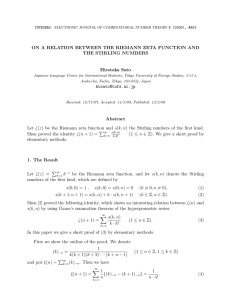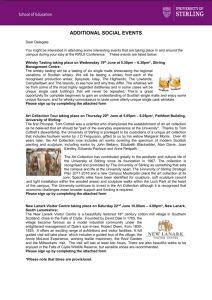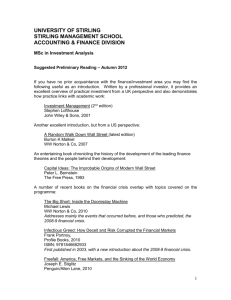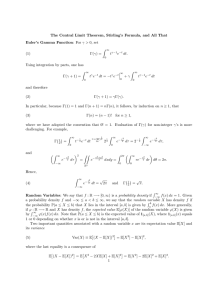Stirling Numbers: First and Second Kind
advertisement
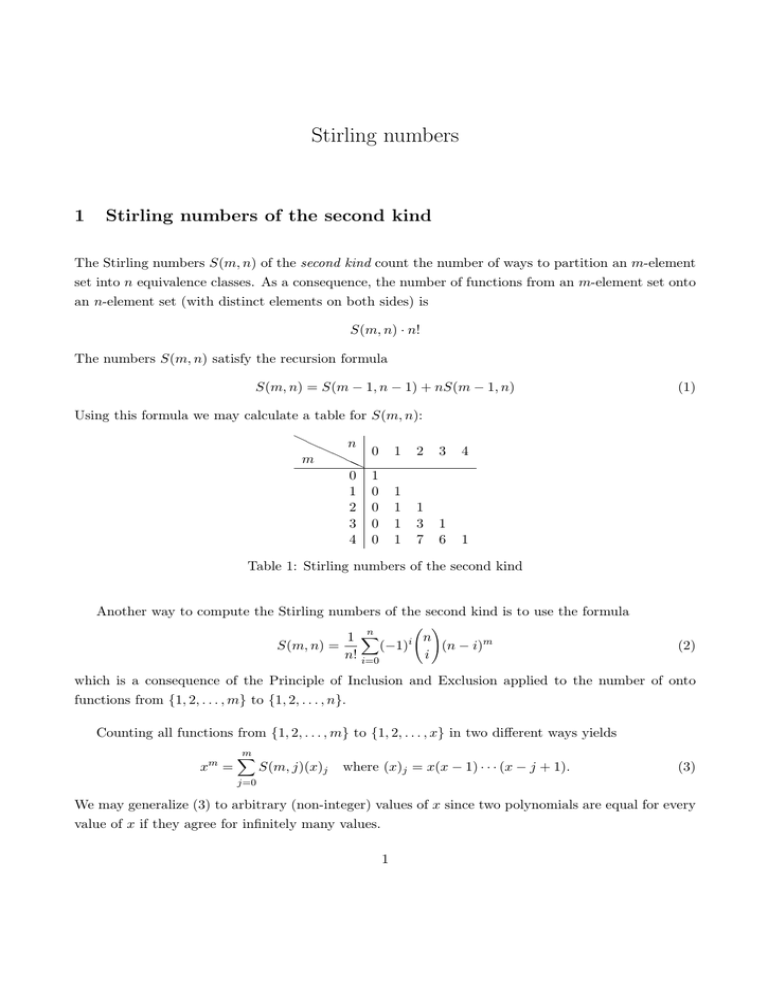
Stirling numbers
1
Stirling numbers of the second kind
The Stirling numbers S(m, n) of the second kind count the number of ways to partition an m-element
set into n equivalence classes. As a consequence, the number of functions from an m-element set onto
an n-element set (with distinct elements on both sides) is
S(m, n) · n!
The numbers S(m, n) satisfy the recursion formula
S(m, n) = S(m − 1, n − 1) + nS(m − 1, n)
(1)
Using this formula we may calculate a table for S(m, n):
HH n
0
m HH
H
H
0
1
2
3
4
1
0
0
0
0
1
2
3
4
1
1
1
1
1
3
7
1
6
1
Table 1: Stirling numbers of the second kind
Another way to compute the Stirling numbers of the second kind is to use the formula
n
n
1 X
S(m, n) =
(−1)i
(n − i)m
i
n! i=0
!
(2)
which is a consequence of the Principle of Inclusion and Exclusion applied to the number of onto
functions from {1, 2, . . . , m} to {1, 2, . . . , n}.
Counting all functions from {1, 2, . . . , m} to {1, 2, . . . , x} in two different ways yields
xm =
m
X
S(m, j)(x)j
where (x)j = x(x − 1) · · · (x − j + 1).
(3)
j=0
We may generalize (3) to arbitrary (non-integer) values of x since two polynomials are equal for every
value of x if they agree for infinitely many values.
1
2
Stirling numbers of the first kind
The Stirling number s(n, m) of the first kind is the coefficient of xm in the polynomial
(x)n = x(x − 1) · · · (x − n + 1). In other words,
(x)n =
n
X
s(n, m)xm
(4)
m=0
It is easy to verify that the Stirling numbers of the second kind satisfy the recursion formula
s(m, n) = s(m − 1, n − 1) − (m − 1)s(m − 1, n).
(5)
Using this formula we may calculate a table for s(m, n):
HH
n
H
0
m HH
H
0
1
2
3
4
1
0
0
0
0
1
2
3
4
1
-1
2
-6
1
-3
11
1
-6
1
Table 2: Stirling numbers of the first kind
The absolute value of s(m, n) is often denoted by c(m, n), since it is the number of permutations
on m letters with exactly n cycles. This may be shown by induction using the recursion formula (5)
and
c(m, n) = c(m − 1, n − 1) + (m − 1)c(m − 1, n)
3
Relation between the Stirling numbers of both kinds
Equations (3) and (4) indicate that the matrix of Stirling numbers of the first (second) kind allows
to express the falling factorials of x in the basis of powers of x (and vice versa). Hence if we take the
first k columns and first k rows for any fixed k of Tables 1 and 2, the resulting matrices are inverses
of each other. In other words
min(m,n)
X
s(m, k)S(k, n) = δm,n
(6)
S(m, k)s(k, n) = δm,n
(7)
m=0
and
min(m,n)
X
m=0
Here δm,n is the Kronecker-delta whose value is 1 if m = n and 0 otherwise.
2



